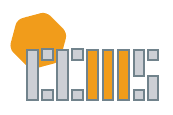Abstract / Synopsis
Humanistic geographers distinguish between space and place: “What begins as undifferentiated space becomes place as we get to know it better and endow it with value” (Tuan, 1977, page 6). In this essay, we seek to demonstrate how mathematics education researchers and mathematics instructors may find space and place illuminating for understanding important aspects of students’ learning experiences during the coronavirus pandemic—and possibly beyond. Specifically, after introducing the terms and relating them to the context of a university mathematics class, we exemplify how home and class places collided for three undergraduate mathematics students forced to deal with the abrupt transition to online education. We conclude by discussing implications of attending to space and place for designers and researchers of (pandemic) online instruction and make connections to how the pandemic and attending to space and place can serve as a catalyst for reshaping undergraduate mathematics education.
DOI
10.5642/jhummath.LMPQ5945
Recommended Citation
Valentin A. Küchle, Shiv S. Karunakaran, Mariana Levin, John P. Smith III, Sarah Castle, Jihye Hwang, Yaomingxin Lu & Robert A. Elmore, "Collapsing Spaces, Colliding Places: Leveraging Constructs from Humanistic Geography to Explore Mathematics Classes," Journal of Humanistic Mathematics, Volume 13 Issue 1 (January 2023), pages 54-69. DOI: 10.5642/jhummath.LMPQ5945. Available at: https://scholarship.claremont.edu/jhm/vol13/iss1/5
